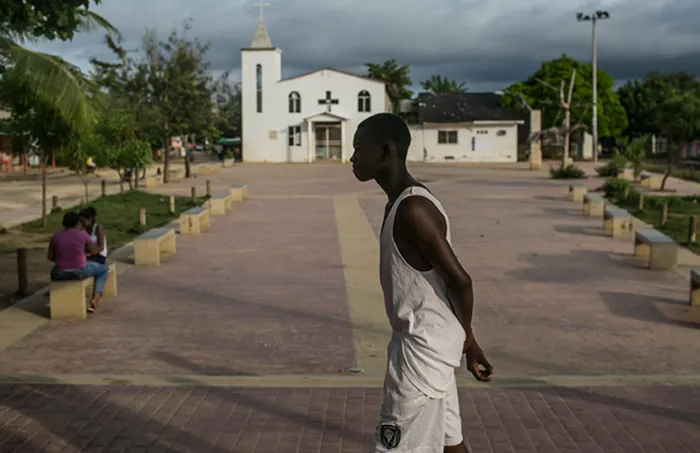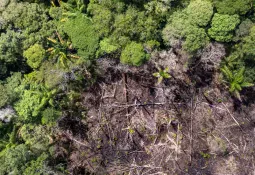An intangible moment of heritage of humanity

In a settlement in Colombia, founded by escaped slaves three centuries ago, ALEXANDRE MONIZ BARBOSA finds that while the iron shackles have been broken, the residents remain chained to the past by a desire to maintain history for posterity
Today, they are rusted and can be overlooked but the iron poles at the Plaza De Aduana in Cartagena, Colombia, to which over 400 years ago humans were chained and kept on viewing before being auctioned as slaves, are a grim reminder of the African slave trade. I walked past it early on a morning in August fully aware that within a couple of hours I would be walking on the streets of San Basilio De Palenque, a centuries-old settlement that is another reminder of the slave trade that existed in the past. Could there be a more ominous setting to the trip?
Yet, when the bus bumped its way over what passed off as a road and turned into the Palenque, the situation suddenly was not as depressing anymore. The atmosphere in the main square, where stands a monument to Benkios Bioho, the African slave who escaped the white colonisers and is credited with having founded the settlement, was upbeat. There was laughter, music and the sounds of children’s voices, telling me that though slavery existed in the centuries past, the iron chains have been broken and the wounds have been healed. The residents of the Palenque are not in shackles anymore, not physically at least, and they revel in a freedom that was gained centuries ago.
San Basilio de Palenque is a settlement about 70km from Cartagena founded in the XVII century. Like most other Palenques, its villagers are black and descendants of escaped slaves. This particular one is among the few that exist in Colombia today much like it did centuries ago, preserving traditions and keeping alive the culture, which brought it UNESCO recognition as a Masterpiece for Oral and Intangible Heritage of Humanity.
Three centuries after San Basilio de Palenque came into being it has grown into a small town that balances its traditions with the modernity that unfailingly creeps in. This is not indicated merely in the form of internet connectivity and cell phone connections, but an increased economic status that is visible by the concrete housing that is replacing mud walls and thatched roofs. Strangely, to these concrete blocks are an unnecessary appendage in the form of iron grills on the windows and doors. “It (grills) is not necessary. When you put it, this means your economic status is improving. There is not much crime here or even vandalism,” says John Jaeiro a local educator, weaving in the last fact that can also be borne out by the lack of a uniformed police force in the village.
Change is coming to the Palenque in more ways than one. An instance is the names of people. The Palenque, Jaeiro says, was formed in 1603 and at that time the residents all had African names. With time in 1713, following an agreement with the Colombian government the African names changed to Spanish names and now television and sports have brought new names like John for Juan, and though he claims it is not a trend, in the town’s cemetery lies buried an Abigail Cassini whose gravestone states she was born in 1902. Modernisation and a higher purchasing power can be visible in the cemetery too, where pink and red ceramic tiles, of the kind used in bathrooms, vie with plain concrete cement mausoleums, another symbol of a family’s improving economic status.
And while one must root for the desire of the residents to improve their status while breaking free from oppression and discrimination, much as the founder Benkios did, there is also the danger that if this happens the town may lose its unique cultural identity which has given it UNESCO recognition. Yet, in the desire to maintain the historical truth of slavery, there arises the question of whether it is right to comodify the residents of the Palenque for tourism purposes. The iron shackles have been broken, but the intangible desire to maintain intangible heritage is in a way holding back a community from breaking free completely, and perhaps only so that the developed world may see the past through their present.






